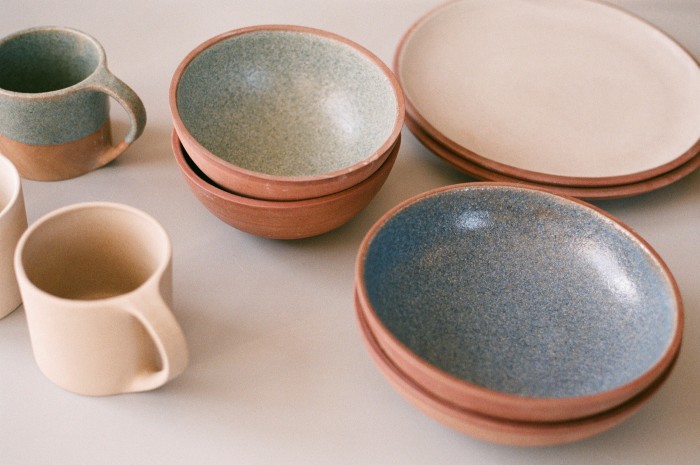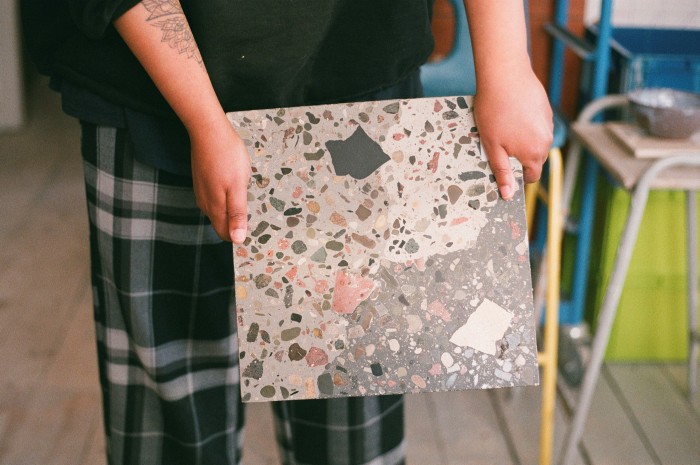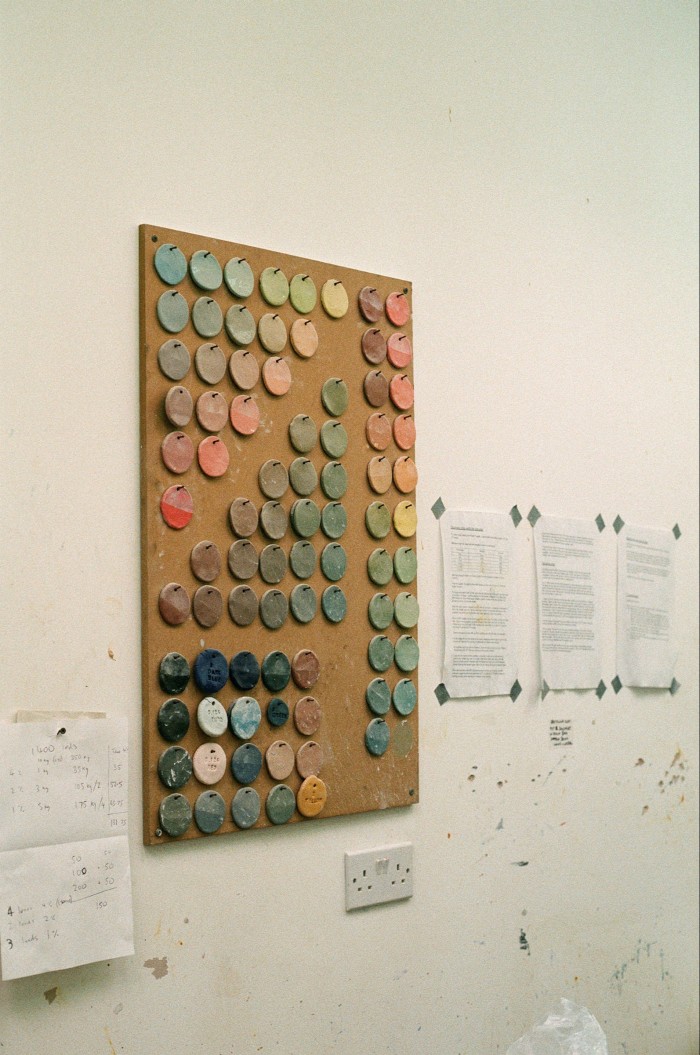From waste to taste: the art of recycled ceramic tableware

Roula Khalaf, Editor of the FT, selects her favourite stories in this weekly newsletter.
Ask someone what comes to mind when you say recycling and they might list the contents of their weekly bin collection: plastic, cardboard and glass. They are unlikely to mention dinner plates.
Factories producing ceramics have to return any wastewater to the mains clean, which means that machinery is hosed down and the sludgy residue is filtered out and sent to landfill. What about broken plates, tiles, bricks and old toilets? That too goes to landfill.
For architectural ceramicists Granby Workshop, this is gold. Granbyware’s bowls, mugs and plates all use these materials. It has created the first 100 per cent recycled ceramic dinnerware.
Granby Workshop’s interest in eco-materials began in 2011 when it was set up by Assemble — a multidisciplinary architecture and design collective — to make tiles, fireplaces and door handles for the Victorian terraced houses being regenerated in Toxteth, Liverpool, as part of The Four Streets project. This led them to be the first “non-artists” to win the Turner Prize in 2015.

People with a connection to the local area and a creative skill — be it poetry, graphic design or illustration — were hired on a freelance basis to form a team of 12 people. Assemble eventually took a step back, advising the workshop that they could establish themselves further if they wished to hire a full-time team. They reduced to five people and turned their focus to ceramics.
It is hoped the tableware will be a strong seller for Granby Workshop, whose main customers are “25-35-year-old women from London”, says Sumuyya Khader, the operations manager and visual artist who has been on the team since the start.
The trend for artfully mismatched dinnerware has come to our tables from the shelves of antique stores. And with earthenware appearing everywhere on Instagram, Granby’s products are of the moment. “Ceramics has hit a boom,” Khader says. If it is sustainable, that is a second box ticked.

Between other commissions, including with fashionable optometrists Ace & Tate and the Venice Biennale, Granby works on becoming more sustainable as a small-scale provider. Granbyrock — used in the Four Streets houses — is akin to terrazzo but composed of recycled building rubble.
Grand Victorian houses flank Princes Avenue in Toxteth but behind it lie boarded-up terraces and poorly kept streets. That is until you reach a roadside sign reading “Granby Four Streets Regeneration”. Here, everything changes: “we are the future” is painted on a vast brightly coloured mural opposite a chicken shop and a hair salon adjacent to the workshop.
“Our focus has been establishing who we are while keeping a connection to where we are,” says Khader. The clue is in the name. “Being called Granby Workshop means a lot,” she says. “The reason that we exist as a company is because of the Four Streets project.”
The team of five have just moved from a Victorian terraced house arranged over several floors to bigger premises half a mile down the road.

Finalising the Granbyrock took eight months. Once they had the waste material, it had to be “pugged” — making it pliable, soft and without air bubbles — before being formed into tableware.
The initial testing was on very small batches, so scaling it up and ensuring every batch was consistent was the challenge. Valentine Clays, a manufacturer in Stoke-on-Trent, helped Granby to develop the recipe. The clay is extruded into 6ft rolls before it is shaped into a bowl, plate or mug and then fired in a kiln. Finished items cost about £20-£25.


The products’ exterior is unglazed to reveal the natural texture — though remains dishwasher safe — while a thick interior glaze transforms during firing in unexpected ways to produce deep multihued colours from taupe
to turquoise.
To develop the sustainable glaze, it was necessary to analyse and deconstruct traditional glazes, then source recycled substitutes. “The glaze recipe is ours. But in a glaze you need stains and [other] raw materials. So we can’t typically just use a standard colour,” Khader says. She says it was “near impossible” finding the right elements to replicate. But they eventually succeeded, managing to source everything in the UK.

Granby Workshop’s vision is clear. “Sustainability is at the forefront of what we’re doing. It’s where we think ceramics should be going. It is where everything should be going,” Khader says. But, she wonders, “Is everyone else in that mentality? Do you want to buy these plates and bowls when you can just go to Ikea or Tesco?”
If production continues on course, Granby will enable the diversion of 500,000kg of waste from landfill every year.
What is next? “We are actually going to be stocked in Selfridges. It’s a great opportunity because it’s in London and we can’t [often] get to London,” Khader says. But even more exciting for her is the prospect of an education centre and showroom in Granby’s new space. “Hopefully it will make us a bit more involved in what’s happening culturally in Liverpool,” she says.
House & Home Unlocked
FT subscribers can sign up for our weekly email newsletter containing guides to the global property market, distinctive architecture, interior design and gardens.
Sign up here with one click
Follow @FTProperty on Twitter or @ft_houseandhome on Instagram to find out about our latest stories first
Comments